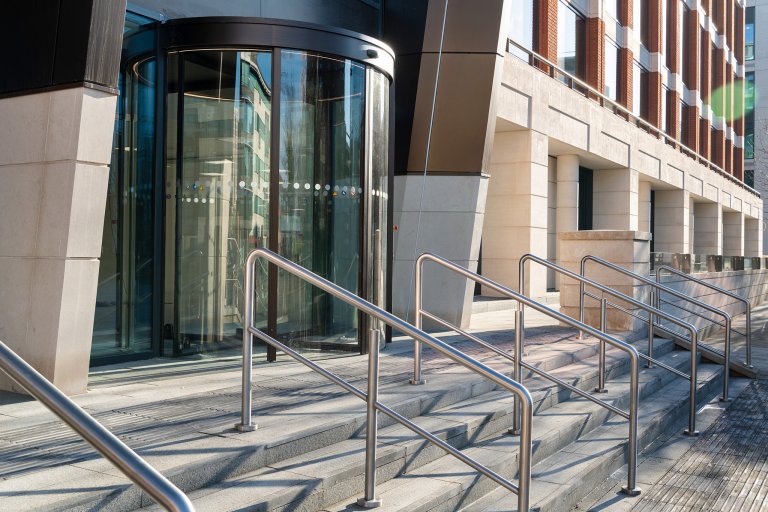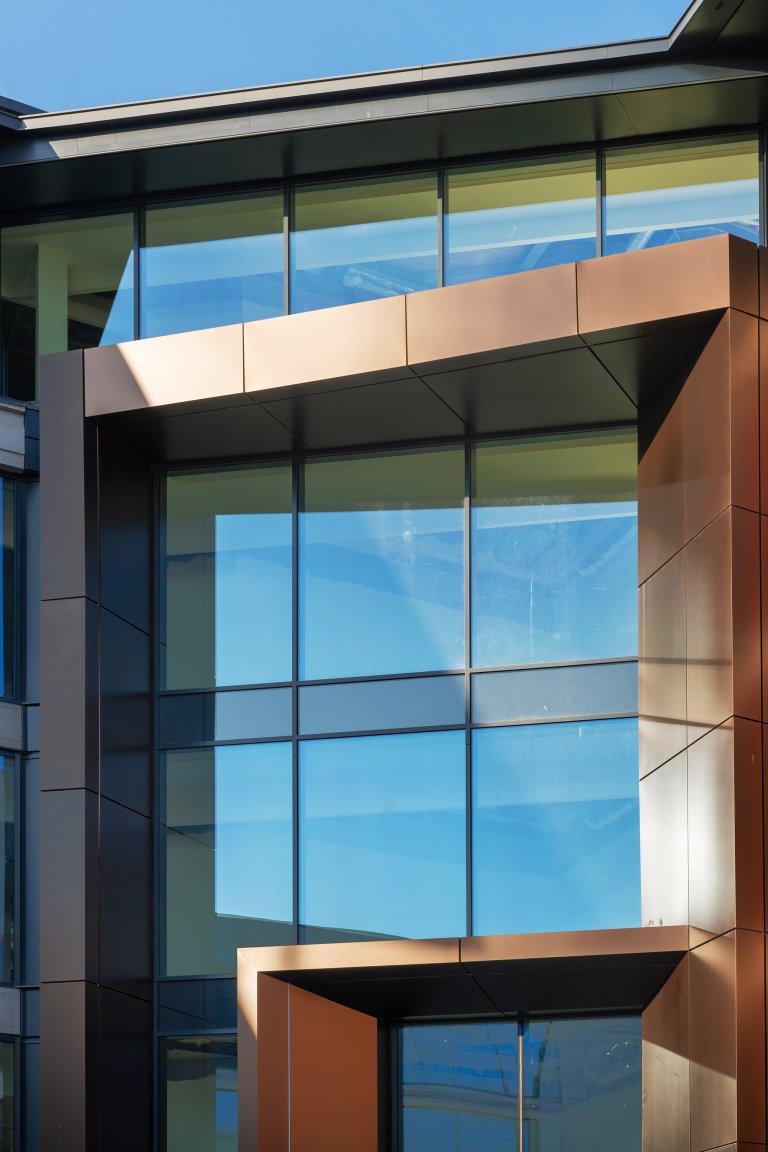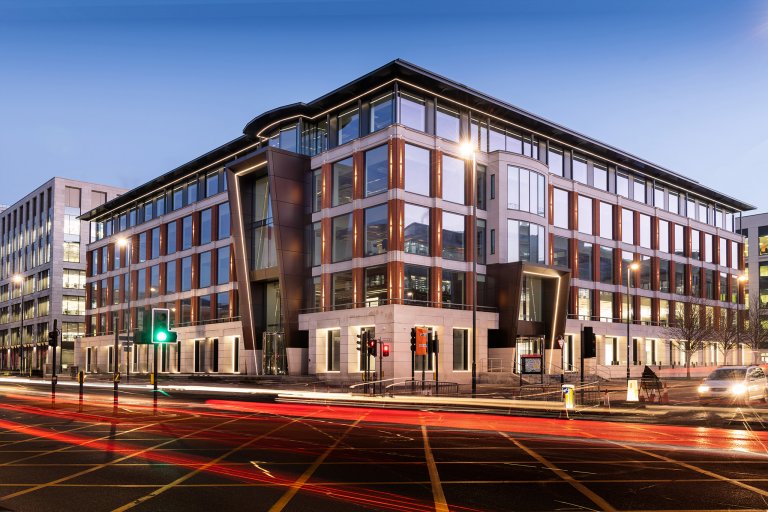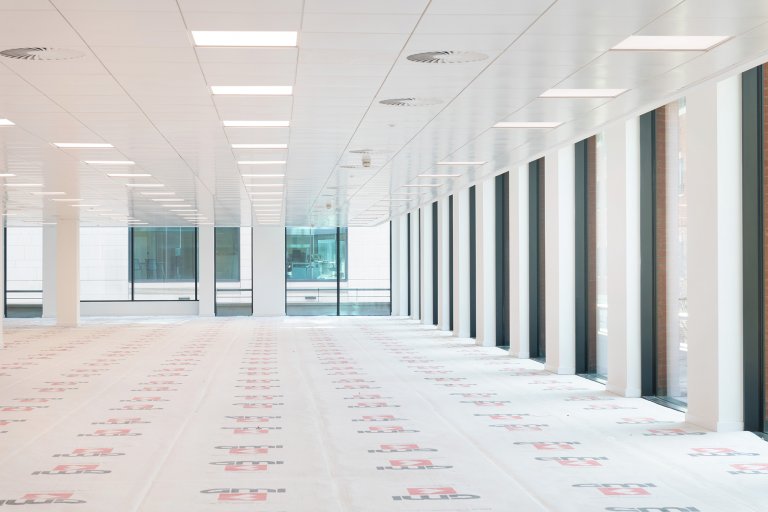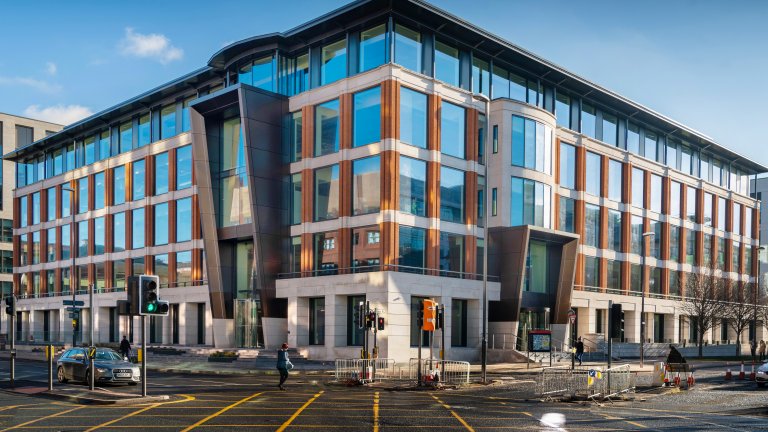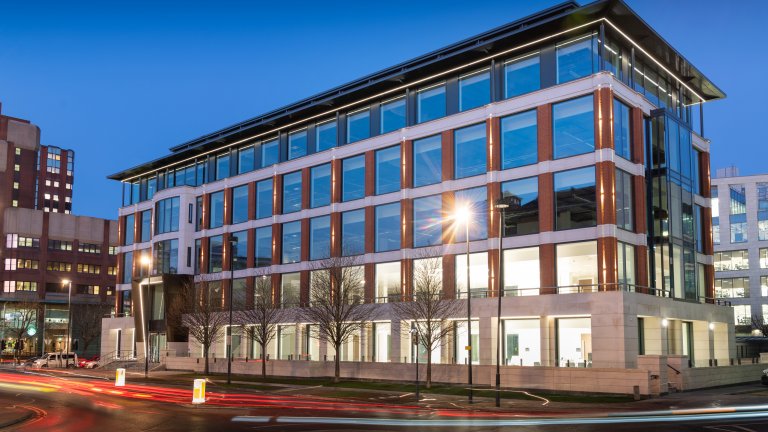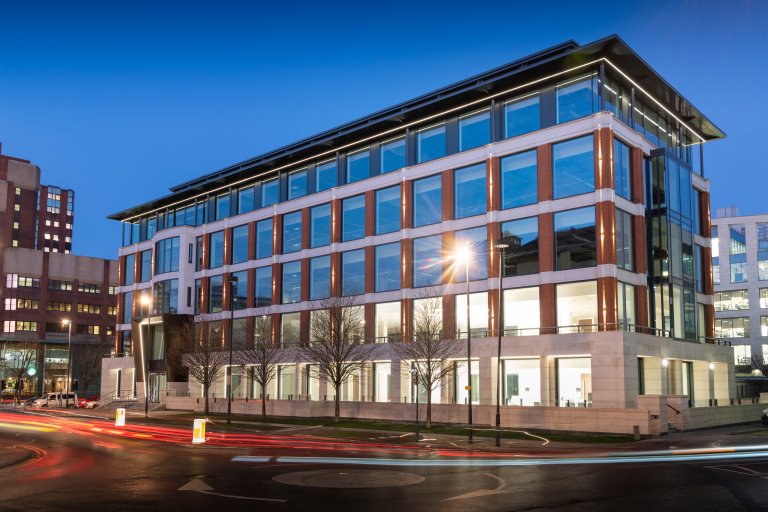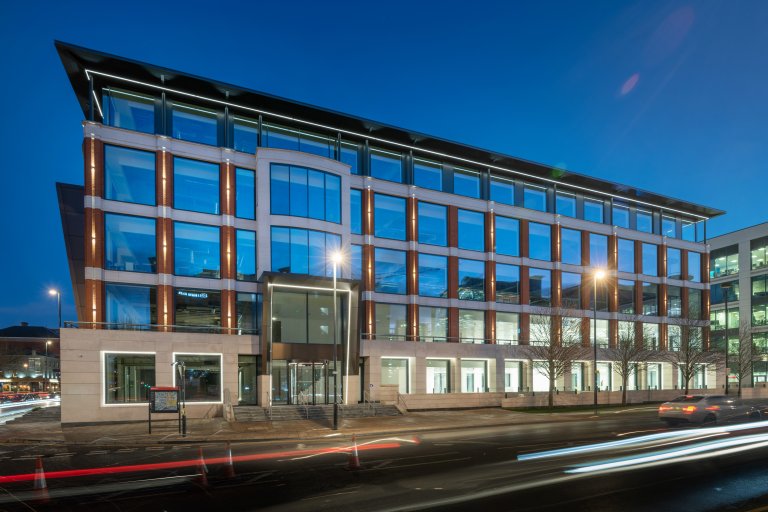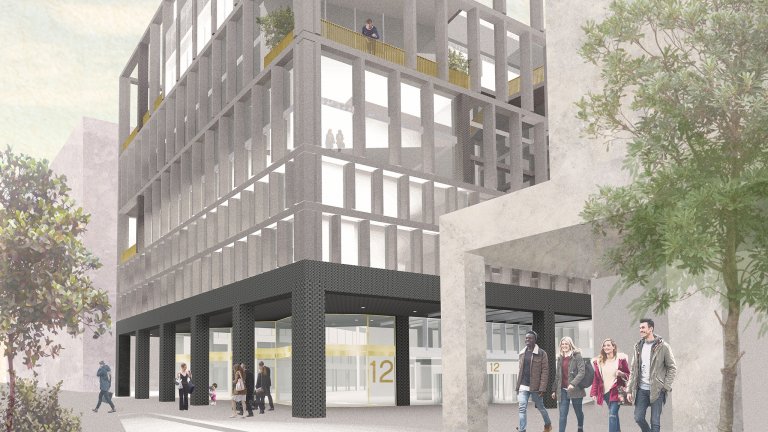Project summary
- Client: Knight Frank Investment Management
- Location: Leeds
- Sector: Workplace
- Size: 124,025 sqft
- Value: £10 million
- Status: Completed
Awards
- CoStar AwardsDeal of the Year | Winner | Winner 2019
- Insider Media Property Awards Refit & Refurb | Finalist | 2019
Story
Wellington Street is the adaptation and refurbishment of the 1980s office block, proving what can be achieved with the creative re-use of aging modern buildings. 33 Wellington Street, formerly Benson House, is a comprehensive office refurbishment which repositions a well-known Leeds building sitting on the periphery of the MEPC Wellington Place masterplan. Standing on a prominent corner in central Leeds, 33 Wellington Street (formerly Benson House) is an imposing building and iconic feature on the approach to the city centre. Yet the building had grown tired, and could no longer offer the quality of accommodation provided by the rapidly emerging MEPC Wellington Place masterplan.
Refurbish, Re-use, Reinvent
No graffiti. No scraped plaster. No shabby chic – not every refurbishment project is about celebrating the dilapidated. In the case of this project, the brief was simple: take this once exemplar icon of modern office design, and make it fit for an evolving, modern workforce. Collaboration was key – as it should be on all projects – reflected by the number of award wins for the scheme; testament to the importance of working in partnership to deliver.
Led by DLG Architects Associate Director Simon Hill, the approach was to reorient the entrances and recalibrate the process of arriving and passing through the site. The design recognised that due to the success and critical mass of the MEPC masterplan, more people would approach the building through Wellington Place. A courtyard extension was created to provide a new entrance and was designed to be identifiable from within Wellington Place, providing an improved physical and visual link between floor plates and was conceived as a landscaped – also by DLG – social hub around which employees could meet and collaborate.
Externally, the brick and stone of the original building was extensively cleaned and refurbished. New bronze anodised fin extensions were introduced to better signify the entrances and reflect the material palette of the nearby No. 3 and No.10 Wellington Place; a double height entrance and atrium create an impactful entrance and 3.2m tall glazing throughout goes beyond floor to ceiling glass whilst increasing the NIA. New external landscaping replaced surface car parking in the promotion of workplace wellbeing and access to green space while an extensive external lighting scheme re-invigorates the buildings prominence during day and night, highlighting the retained brickwork, stonework and the redesigned building entrances.
Delivery
Internally, the cores and risers and building services were redesigned and substantially replaced to support an increased occupancy of 1 person per 8sq.m. WC provision was increased with minimal impact on the NIA through the introduction of high quality efficient “superloos”. Spa quality changing and secure cycling facilities were created to reflect modern workplace aspirations and sustainable means of travel. The project achieved “Very Good” under BREEAM Refurbishment and Fit Out 2014 and also benefits from a much improved EPC rating.
The works were procured under OJEU regulations via a competitive single-stage design and build arrangement and were delivered in only 45 weeks on site, an incredible feat given the extent of the refurbishment works. A key factor in this being achieved was the close collaboration between the construction teams of the landlord and incoming tenant, a number of significant tenant changes were accommodated within the construction programme and with limited impact upon the £9 million construction budget.
A testament to the close working partnerships between the design, client and tenant teams, the project was awarded ‘Deal of the Year’ at the CoStar awards 2019.
Despite being an existing building, constraints internally and a limited budget, the client and the design team were keen to measures implemented which actively encouraged away-from desk interaction and collaboration. This very practical approach to wellbeing was implemented via the landscaping of the former podium car deck to provide bespoke-designed places to sit, stand, lie and play, integrated with planting.

